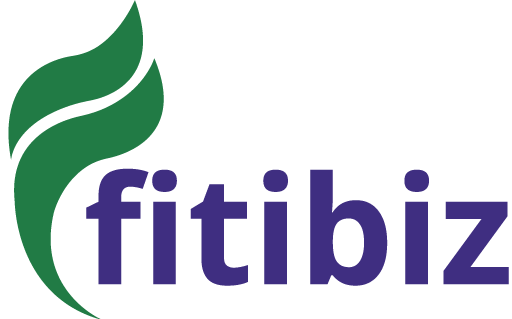Is Occipital Nerve Pain Differ From Normal Migraine Or Headache?
People usually don’t get proper treatment or cure for their headache or migraine, as there are various types of headaches or migraines which may not be a normal one and is a nerve pain actually. People suffering from such pain is actually an Occipital nerve pain or migraine.
So yes Occipital nerve pain or headache is something different from normal headache or migraine. Below we will be discussing how is Occipital neuralgia different from other types of migraine, its symptoms, causes, and its treatment.

Occipital neuralgia is a type of headache. It starts in the upper neck or back of the head and can radiate behind the eyes and over the scalp. This is known as a particular kind of headache, but it may have similar symptoms to those of other types. It often affects people with migraines.
Occipital neuralgia problems may result from inflammation, irritation, or injury to the occipital nerves, that flow through the scalp. It includes unexpected bursts of pain, either with or without a continuous headache. In this article, read how to recognize it, what creates occipital neuralgia, and what to do when it happens.
Different Between Occipital Nerve Pain And Migraine Headache
Basically, migraine problems may cause by some changes in the brain, on the other hand, occipital nerve pain or migraine is generated when there is any nerve irritation or compression rolled down or up from the neck portion or at the back of your scalp. Thus, normal migraine and occipital migraines are not very much the same and they even have to take various treatments for cure.
If migraine medication is not working, then your recurring headaches may not be migraines after all. Because the occipital neuralgia is a nerve-induced headache. Therefore it can confuse you with migraine because the symptoms can be similar. These symptoms may include
Burning, aching, or throbbing from the bottom of your head up to your scalp. Some sharp and shock-like or piercing pain in your upper neck and back of the head. Also, you will feel pain on one or both sides of your head, pain behind your eyes, pain when moving your neck, and tender scalp.
But that’s where the similarities end. The migraines and occipital neuralgia may require different types of treatments because their sources of pain are different. Migraines are related to changes in the brain. The problem of occipital neuralgia occurs due to irritated or compressed nerves that travel from the neck, up the back of the head to the scalp.
Some pain management specialist says that nerves can become entrapped due to muscle spasms or head or neck trauma, such as whiplash, or sometimes we do not know what causes it. Therefore the main difference between occipital neuralgia and migraine is that migraines tend to have identifiable triggers.
They can be characterized by visual distress and other kinds of symptoms that introduce some headaches. On the other hand, occipital neuralgia does not have any one of these characteristics. Most of the pain experts can identify the problem of occipital neuralgia through one or more of the methods such as:
- History of the patient: When the pain begins in the neck and radiates up the head to the eyebrows, that is known as common occipital neuralgia.
- Primary tests: Doctors may sometimes generate the pain by pushing on occipital nerves at the bottom of the skull.
- Block in nerve: When the pain goes after the doctor numbs the occipital nerve, then he can be assured that occipital neuralgia is producing the headache.
What Is Migraine?
Migraine headache is a type of neurological issue, which can be recognized by various symptoms. One such is frequent intense enfeeble headache. More in addition to it, a person suffering from migraines can go through nausea, vomiting, difficulty speaking, numbness or tingling, and sensitivity to light and sound. It can pass on from generation to generation.
What Is Occipital Never Pain?
Occipital Neuralgia (ON) is one such type of nerve pain from which people gets certain headache almost similar to migraine. ON is a state of the nerve which runs through the top of the spinal cord to the scalp of the head named Occipital nerve. When this nerve gets injured or inflamed or got compressed due to any reason, you will feel pain. Pain exactly starts in the lower back of the head or at the bottom of the skull.
As you know occipital neuralgia is produced by trauma or due to an infection of the occipital nerves many times due to some head injury or pinched nerve. When the pain appears like a migraine headache, with throbbing pain and burning behind the eyes followed by shooting pain that begins at the base of your skull and radiates upward to the top of your head. At some times the pain may arise on one side of your head.
Occipital neuralgia differs from other types of headache in the cause, areas of pain, type of pain, etc. It results from irritation or injury to the occipital nerves. There are three occipital nerves the greater, the lesser, and the third present in the second and third vertebrae of the neck. The nerves run from the spine to the scalp, up each side of the head.
Sensitivity can develop anywhere along this route. Other causes of headache may include tension, a sinus infection, high blood pressure, the use of certain medications, migraine. Some of these types and causes overlap with occipital neuralgia. One expert points out that it is rare to experience only occipital head pain.
Occipital neuralgia may also play a role in unremitting head and neck pain (UHNP), according to some researchers. A doctor may diagnose UHNP if a person experiences head and neck pain for 15 days or more per month.
Occipital neuralgia is a form of headache that causes pain along the upper neck and back of the head. The pain is in the distribution of the nerves known as occipital nerves (sensory nerves that run from the upper part of the neck to the back of the head).
The pain of an occipital neuralgia headache can be;
- throbbing,
- aching,
- burning, or
- can feel sharp and stabbing
Sometimes, this condition is referred to as occipital neuritis, suggesting there are some associated inflammatory changes that have affected the occipital nerves.
Causes
Occipital neuralgia is a disorder that happens if there is some pressure or irritation unknowing giving to occipital nerves. This may take place if you have any injury or trapping nerves due to muscle tightening or simply inflammation. It had to recognize the main cause even by doctors.
If the pain caused by occipital neuralgia travels along the side of the head to the face, it might initially be mistaken for a condition known as trigeminal neuralgia . However, physical examination and assessment of the history of the pain should reveal important differences that will help lead to the correct diagnosis.
This occipital nerve pain could be primary or secondary. Below are the secondary causes of ON which lead to unbearable head pain.
- Trauma to the back of the head
- Neck tension or tight neck muscles
- Osteoarthritis
- Tumors in the neck
- Cervical disc disease
- Infection
- Gout
- Diabetes
- Blood vessel inflammation
Symptoms
Symptoms are more likely to be intense unbearable headaches just like a migraine. But if you are suffering from Occipital neuralgia or occipital nerve pain, you would feel a sharp, electric shock or jab behind your neck or lower scalp.
There are more such symptoms that will be relating to on head pain.
- Aching, burning, and throbbing pain at the back of the neck and goes to the scalp
- Pain on both or one side of the head
- Pain behind the eye causing eye-watering or eye redness
- Sensitivity to light or sound
- Tender scalp
- Pain when you move your neck
Some other symptoms
Headaches that occur due to occipital neuralgia can be very painful. The condition involves a sudden but intermittent piercing, shooting, or shock-like pain. This may last from a few seconds to several minutes. There may also be a persistent throbbing, burning, or aching pain that continues between the spasms.
The pain often spreads or shoots up from where the neck meets the skull, and it may affect:
- the top of the neck
- the back of the head
- behind the ears
- one side of the head
- the scalp, especially where the occipital nerves connect
- behind the eye on the affected side
There may also be:
- sensitivity to light
- soreness and sensitivity to the touch
- bursts of pain that come and go, lasting for a few seconds or minutes
- a lingering ache between more severe bouts of pain
Small movements can trigger or worsen a burst of pain. These might include:
- turning the head to one side
- laying the head down on a pillow
- brushing or washing the hair
The pain can be intense. Some people say that it feels like a migraine or cluster headache, even though these are different types and require different treatments.
Diagnosis
There is no such particular diagnosis that will confirm that type of pain you are suffering is of Occipital neuralgia only. When you will go to a doctor, initially you will go through a physical examination. When the occipital nerve gets pressed, it will feel like little tenderness or pulpiness over that region which will produce non-toleratable pain.
How is occipital neuralgia diagnosed? Your doctor will ask you about your medical history and any injuries to your neck or spine. A physical exam can determine whether pressure on the occipital nerve elicits pain. Other tests may include an MRI scan and an injection nerve blocker to see if there is any relief.
Furthermore, doctor if find symptoms similar to occipital nerve pain then they might give you temporary anesthesia to that nerve called a nerve block. If the patient gets relief from pain, then its sure that suffering comes from Occipital neuralgia.
In higher cases, the doctor will prescribe you to have a blood test, or MRI or CT scan to confirm is the suffering is from ON. By getting this done, the doctor can give you the appropriate diagnosis of the pain to get relief from it.
Treatment
Though, diagnosis of Occipital Neuralgia is a little bit difficult to understand, as there is no such certain test that will define it. But after you get diagnosed and get confirmed that the headache you are getting is from ON. The doctor will proceed with its treatment so that you get cured and feel refiled from the unbearable pain you are going through.
How to treat occipital neuralgia? Taking oral anti-inflammatory medicines is the first step to treating occipital neuralgia. Using massage or heat to relax the tight neck muscles, that can help you as well. When all those treatments may not give relief, then interventional pain professionals can perform some occipital nerve block. It is when some local steroid and anesthetic are injected nearby the irritated nerve.
When relief in pain may continue from many weeks to many months, and sometimes the pain does not come back. If your headaches have persisted for more than three months and have not responded to conventional treatments, that including medication then it’s time to see a doctor. So there are two types of treatment one is non-surgical and the second one is surgical treatment.
Treatment includes rest, massage, and heat to the affected area and neck. Anti-inflammatory medications, such as muscle relaxers, can often relieve the symptoms. More aggressive treatments include occipital nerve blockers that provide instant relief with a few side effects, such as dizziness and lightheadedness.
Non-Surgical Treatment
People usually prefer to have non-surgical treatment with the help of certain medicines and therapy. Below is some treatment doctor follow on a patient with Occipital Neuralgia.
- By using a heating pad at the back of the neck or the portion of pain, the patient often gets relief by the head.
- Some physical therapy or messages are there to get rid of it.
- Some prescribed medicines are there to get comfort from pain.
- Anti-inflammatory medications;
- Muscle relaxants; and
- Anticonvulsant medications
- Injections as Percutaneous nerve blocks can be used not only at the time of diagnosis but also to cure actual pain of Occipital neuralgia or occipital nerve pain.
- Another injection named Botulinum Toxin (Botox) is been inject to decrease inflammation doing on in nerve.
However, injecting drugs into the vertebrae is a relatively invasive procedure. A doctor will usually recommend this treatment only if others have not worked. Also, these injections will not cure neuralgia, and the pain may return a few months later.
Surgical treatment
Surgical treatment is the last option for those patients who are not getting cured with medicines or injections or any type of therapy. Below are some of the surgeries taken by doctors in harsh conditions.
- Occipital Nerve Stimulation: under this operation, electrodes will be placed under your skin near the occipital nerves. This work is the same as stimulation in the spinal cord is done, even device use for it is the same.
- Spinal Cord Stimulation: this stimulating electrode device will be placed between the spinal cord and the vertebrae. This device releases electrical impulses which will blick the pain releasing from the spinal cord to the brain.
- C2,3 Ganglionectomy: this treatment comes in the procedure when you are under the second and third cervical sensory dorsal root ganglion. Study says that 95% patient who goes through this treatment get immediate relief from the problem of Occipital Neuralgia for least 1 year.
- Occipital release surgery: The surgeon will make a small cut in the back of the neck and releases the nerves from tissues that are compressing them.
In severe cases that have not responded to other treatments, a surgeon may cut the greater occipital nerve. However, this will lead to scalp numbness.
Exercises
Some exercises can help, especially if poor posture is contributing to occipital neuralgia. For example, chin tucks can help stretch and strengthen the neck muscles and other tissues. To do chin tucks:
Stand with the feet shoulder-width apart, with the back against a wall.
Tuck the chin down, then pull the head back until it touches the wall.
Hold this position for 5 seconds. When pulling the head back, keep the chin in a straight line, without lifting or tipping it. Do not continue if the exercise is painful.
Prevention of Occipital Neuralgia
For most people, conservative therapy or occipital nerve blocks are quite effective in relieving their pain. For others, more invasive therapies can be quite successful. As with many other conditions, the response to treatments can vary widely.
This type of headache does not lead to other neurological conditions or nerve problems, even if left untreated. There are a few options that may help prevent occipital neuralgia. These include anti-seizure medications and tricyclic antidepressants.
Lifestyle remedies that may help include getting regular exercises, such as stretching or yoga, seeking advice on posture, avoiding keeping the head in a downward and forward position for a long time.
Home remedies
Some of the natural home remedies or therapies can help relieve head and scalp pain from an occipital neuralgia headache. The medical treatment for occipital neuralgia can vary. Often, conservative treatments are used as first-line options, including;
- Rest: resting can help to relieve pain.
- Massage: massaging the base of the skull with the fingertips
- Muscle relaxants: applying warm compresses for up to 20 minutes
- Physical therapy: performing exercises such as chin tucks
- Heat, and anti-inflammatory medications.
A physical therapist can provide specific exercises to help manage pain or prevent a recurrence.
How Occipital Neuralgia Is Cured?
For most people, conservative therapy or occipital nerve blocks are quite effective in relieving their pain. For others, more invasive therapies can be quite successful. As with many other conditions, the response to treatments can vary widely. This type of headache does not lead to other neurological conditions or nerve problems, even if left untreated.
Can Your Diet Cure The Occipital Neuralgia?
Well, some kind of diet can do so such as a ketogenic (keto) diet, that can help reduce inflammation and pain from an occipital neuralgia headache. The ketogenic diet is a high-fat diet that drastically restricts carbohydrates. It produces a reaction in the body that is similar to fasting.
The low-carb, high-fat keto diet causes the metabolic state known as ketosis, in which substances known as ketones or ketone bodies accumulate in the blood. These are the same substances that accumulate during ketoacidosis (a medical emergency) in people with type 1 diabetes.
A ketogenic diet has been shown to be effective in treating seizure disorders that have not responded to two different antiseizure medications. While this treatment is most often used in children, some adults with seizure disorders may also be helped by a ketogenic diet.
Recent studies have explored the ability of ketogenic diets to reduce inflammation and pain from occipital neuralgia. A ketogenic diet is typically not recommended for weight control because it is not superior to other more standard weight management plans and may be associated with health risks, including nutritional deficiencies.
Most ketogenic diets permit foods high in saturated fat, which including processed meats, fatty cuts of meat, for example; red meat, lard, and butter. Usually, a ketogenic diet also includes unsaturated fats like; oily fish, nuts, seeds, and plant oils.
Final Words
Occipital neuralgia can be painful. However, a wide range of treatment options is available to increase the likelihood that you will be able to manage it successfully, especially if the underlying cause is treated. While this condition is not life-threatening, it is painful. So make an appointment to see your doctor if you are experiencing symptoms. If you do not already have a primary care provider, you can browse doctors in your area.
When patients are inspired to continually follow up with the primary care specialists and providers to manage their treatment. Surgeons encourage patients to come back to the clinic within every few months in the same year when following the surgery. In certain visits, they may regulate the stimulation settings and evaluate the patient’s improvement from surgery.
You should follow up with your doctor assures that the patient is receiving correct and very effective care. All those patients who undergo occipital nerve stimulation will catch up with the device representative. They will adjust the settings of their device also the parameters as per the need, alongside their doctors.




Write a comment
Your email address will not be published. All fields are required